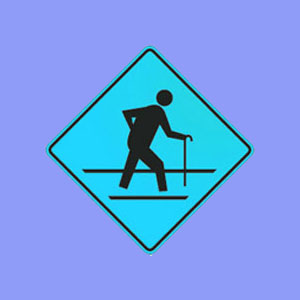
Walking for sciatica is an easy exercise therapy option which can help to rehabilitate patients who have lost physical functionality due to chronic back and leg pain. Walking is not usually a solution for permanently curing sciatic nerve pain, but is certainly a step in the right direction (pardon the pun). Walking is a highly under-rated form of exercise that can be performed by virtually anyone, at any age.
This discussion will profile walking as a form of sciatica therapy. We will delve into uncovering the benefits of this gentle exercise, as well as some of the possible downsides of using fitness activity as a treatment option.
Walking for Sciatica as a Treatment
It is important to remind the reader that although many cases of sciatic nerve pain are blamed on a circumstantial spinal structural source, many lower body radiculopathy complaints are actually the result of a nonspinal or even non-structural process. Disease, localized injury, piriformis syndrome, sacroiliac joint problems and even oxygen deprivation of the neurological and muscular structures can all enact symptoms which mimic sciatica perfectly.
Walking is a great way to increase localized circulation of blood to painful areas of the lower back, buttocks and legs. Walking is low impact and is usually quite comfortable for patients, even if other activities might elicit pain.
Walking should provide temporary relief from ischemia, and some soft tissue conditions, but will probably not do much to resolve symptoms sourced by disease processes or spinal nerve compression syndromes.
Therapeutic Walking Guidelines
If you intend on using walking as a sciatica exercise treatment option, be sure to speak to your doctor first. If they recommend walking as a means of treating sciatica, or just as a positive fitness activity, here are some important guidelines to keep in mind:
Start slowly and do not walk too far or too fast right away.
Slowly increase your endurance by increasing speed and distance daily.
Walk somewhere safe. Shopping malls and running tracks are ideal.
Do not walk in secluded areas or in areas of high traffic. Make sure to bring a mobile phone with you, especially if you are walking far from home.
Stay hydrated and do not eat right before you begin walking.
Walking for Sciatica Advice
Walking is a wonderful activity which should help you to get reacquainted with the physical exercise your body must miss since being limited by the ravages of sciatica. Make sure to speak to your doctor or physical therapist before beginning any exercise program, to make sure that there are no contraindications to using walking for pain relief and muscular rehabilitation.
If you can not find good and safe areas to walk, consider buying a treadmill, or better yet, an elliptical trainer. I love my elliptical and use it during the winter and on rainy days when I can’t get out of the house. There are inexpensive options available for home exercise equipment and many devices even fold for easy storage.
Just remember that walking is not typically a cure for sciatica. It is merely a beginning. Never underestimate the power of a good walk. It clears the mind and exercises the body. If you walk vigorously, like I do, then your body can receive a great work out, as well.





